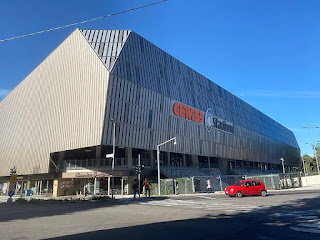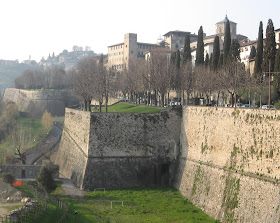NEW - The founding of Atalanta football club
Bergamo institution started by students of local high school
The football club now known as Atalanta Bergamasca Calcio - generally referred to as Atalanta - was founded on this day in 1907 in the Lombardy city of Bergamo. The club was the idea of a group of students from the Liceo Classico Paolo Sarpi, one of the city’s oldest and most prestigious high schools. They gave it the rather long-winded name of the Società Bergamasca di Ginnastica e Sports Atletici - the Bergamasca Society of Gymnastics and Athletic Sports - to which they attached the name Atalanta after the Greek mythological heroine famed for her running prowess. For the first seven years of its life, the new club had no home and played friendly matches on whatever open space was available, but in 1914 found a home ground in Via Maglio del Lotto, adjoining the railway line just outside Bergamo station. The ground had a small grandstand housing 1,000 spectators. It is said that the drivers of trains approaching the station on match days would slow down in order to enjoy a few moments of the action. Read more…
_____________________________________
Bartolommeo Bandinelli - Renaissance sculptor
Career scarred by petty jealousies
The sculptor Bartolommeo Bandinelli, a contemporary and rival of Michelangelo and Benvenuto Cellini in Renaissance Italy, was born on this day in 1473 in Florence. He left his mark on Florence in the shape of the monumental statue of Hercules and Cacus in the Piazza della Signoria and his statues of Adam and Eve, originally created for the Duomo but today housed in the Museo Nazionale del Bargello. Also known as Baccio Bandinelli and Bartolommeo Brandini, he was skilled in small sculptures but became known and disliked for his antagonistic manner with other artists and his particular hatred of Michelangelo, of whom he was bitterly jealous. Giorgio Vasari, the artist and sculptor who was the first to compile a written history of art and artists, and who was a student in Bandinelli’s workshop, recalled an occasion when Bandinelli was so enraged by the excitement that ensued when a Michelangelo drawing was uncovered in the Palazzo Vecchio that, as soon as an opportunity arose, he tore it up. Where Michelangelo was revered for everything he did, Bandinelli’s critics said he lacked the skills required to tackle large sculptures. Read more…
________________________________________
The end of the Venetian Republic
Peace treaty saw Venice given away to Austria
A peace settlement signed in a small town in north-east Italy on this day in 1797 heralded a dark day for Venice as the Most Serene Republic officially lost its independence after 1,100 years. The Treaty of Campo Formio, drawn up after the Austrians had sought an armistice when faced with Napoleon Bonaparte's advance on Vienna, included an exchange of territory that saw Napoleon hand Venice to Austria. It marked the end of the First Coalition of countries allied against the French, although it was a short-lived peace. A Second Coalition was formed the following year. The Venetian Republic, still a playground for the rich but in decline for several centuries in terms of real power, had proclaimed itself neutral during the Napoleonic Wars, wary that it could not afford to sustain any kind of conflict. But Napoleon wanted to acquire the city nonetheless, seeing it as a potential bargaining chip in his empire-building plans and had his eye on its vast art treasures. In May 1797 he provoked the Venetians into attacking a French ship and used this as an excuse to declare war. The reaction of the Venetian Grand Council and the last of its Doges, Ludovico Manin, was to vote the Republic out of existence. Read more…
_____________________________________
Giovanni Matteo Mario - operatic tenor
Disgraced nobleman became the toast of London and Paris
The operatic tenor Giovanni Matteo Mario, a Sardinian nobleman who deserted from the army and began singing only to earn a living after fleeing to Paris, was born on this day in 1810 in Cagliari. He was baptised Giovanni Matteo de Candia, born into an aristocratic family belonging to Savoyard-Sardinian nobility. Some of his relatives were members of the Royal Court of Turin. His father, Don Stefano de Candia of Alghero, held the rank of general in the Royal Sardinian Army and was aide-de-camp to the Savoy king Charles Felix of Sardinia. He became Giovanni Mario or Mario de Candia only after he had begun his stage career at the age of 28. He was entitled to call himself Cavaliere (Knight), Nobile (Nobleman) and Don (Sir) in accordance with his inherited titles, yet on his first professional contract, he signed himself simply ‘Mario’ out of respect for his father, who considered singing a lowly career. Although he was one of the most celebrated tenors of the 18th century, Italy never heard Mario sing. Instead, the Royal Opera House, Covent Garden in London and the Théâtre Italien in Paris witnessed most of his triumphs. Read more…

.jpg)
.jpg)
_-_Mario,_Giovanni_Matteo_(1810-1883),_tenore_2a.jpg)





.jpg)






